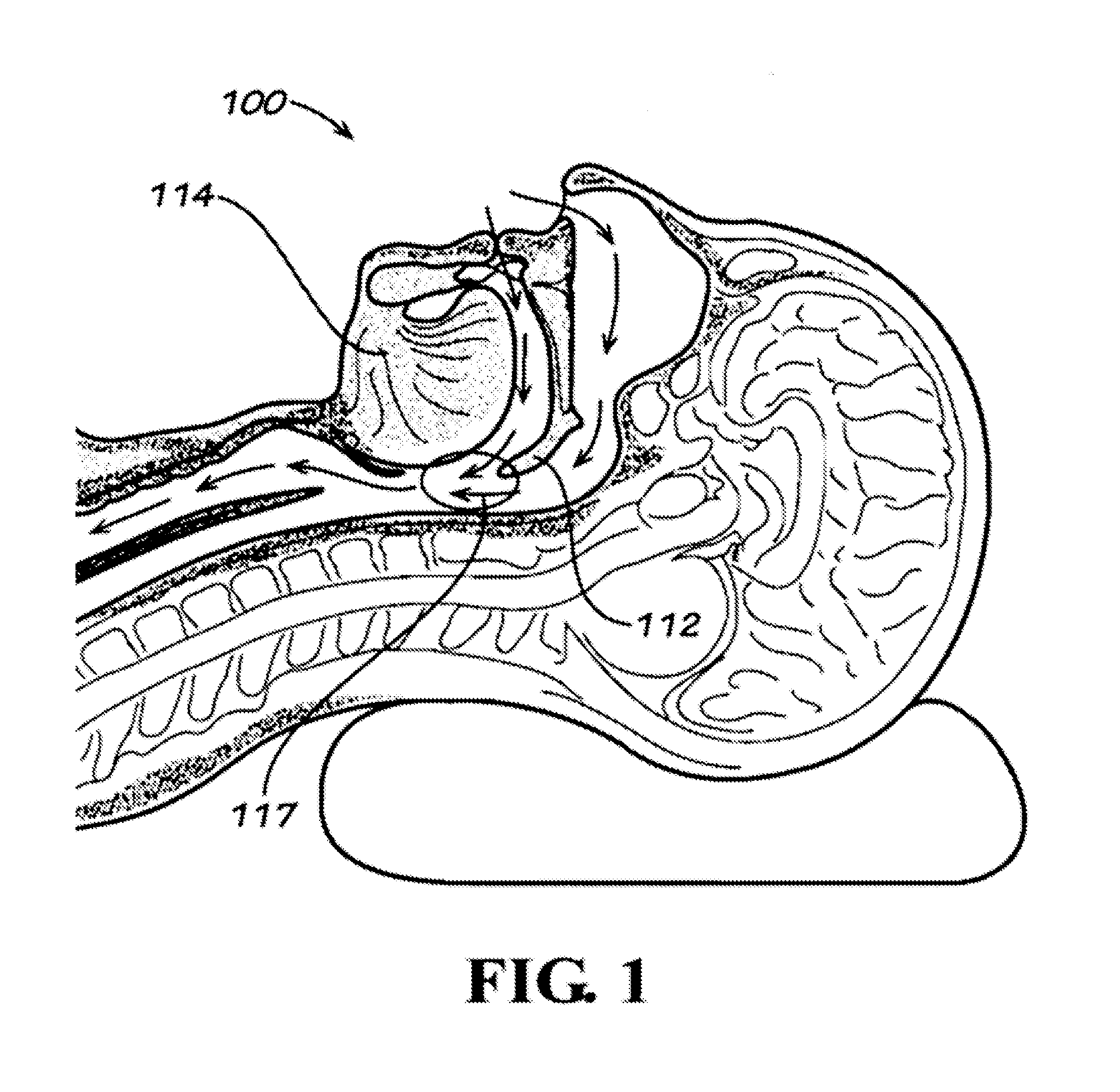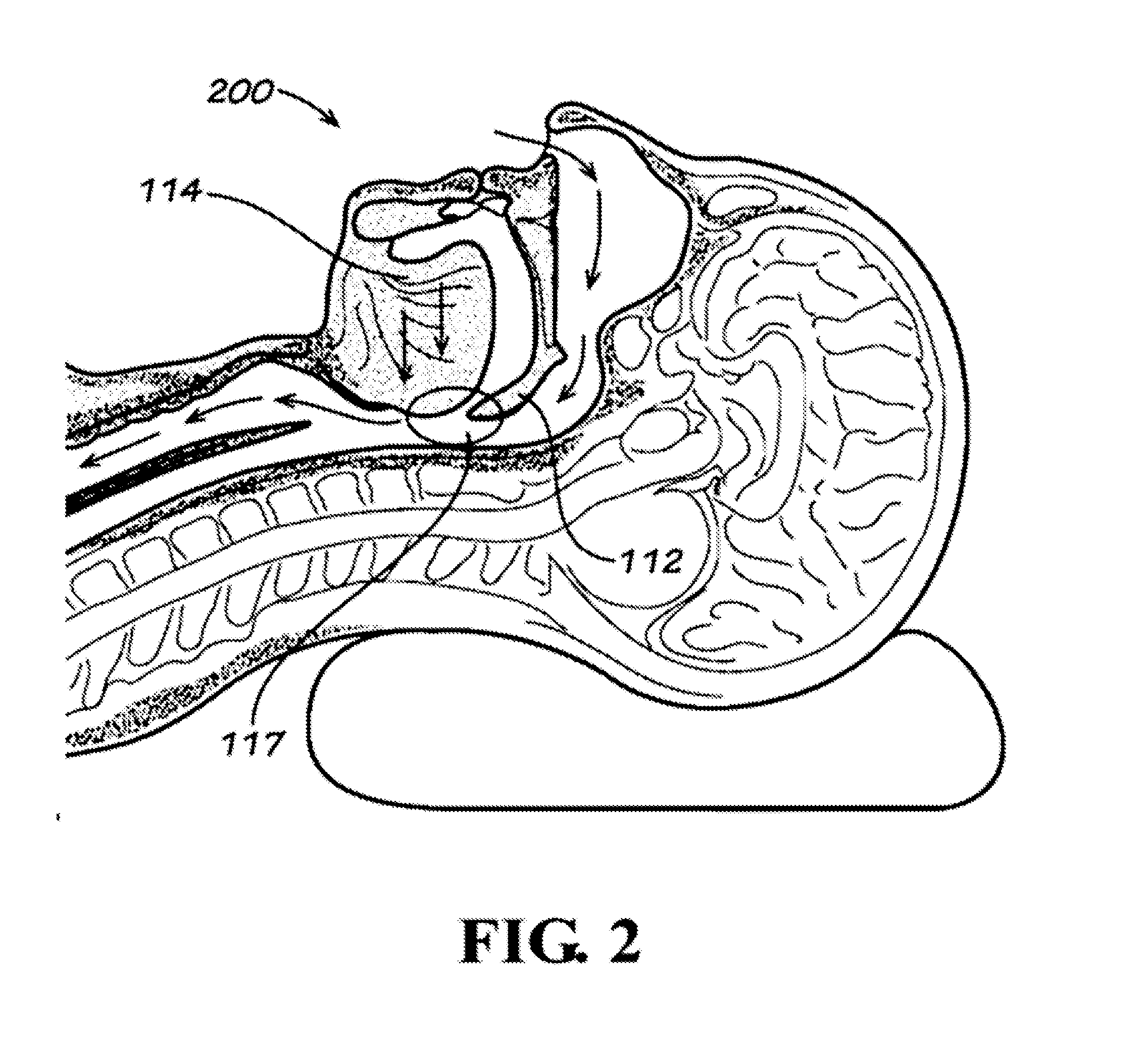It is a rare condition but is the most perilous form of
sleep apnea and it is difficult to treat.
The disadvantages in using the above prior art devices, is that they require expert qualified licensed lab services for fitting of the anti-snoring device to the user's mouth.
Such devices could cause permanent irremediable changes in the bite of the user and permanently alter the jaw position and it requires a dentist to closely monitor anti-snoring device fitting.
These devices do not include an
intra oral dental
overlay to support the tongue against the palate and keep the palate of the user's mouth from reverberating (snoring) during
mouth breathing.
Use of the devices, can cause the subject to become non complaint due to difficulty in its use due to discomfort problems during sleep.
Problems that may occur with CPAP include: restless sleep,
dryness of
nose, throat, and nasopharyngeal tract, cough, excessive dreaming during early use,
nasal congestion, runny
nose, sneezing,
irritation of the eyes and the
skin on the face, abdominal
bloating, and leaks around the
mask because it does not fit properly.
BiPAP machines are more expensive than CPAP machines.
The sleep studies and the CPAP machines are expensive and one can rent a CPAP
machine before one buys it.
The most common problem with CPAP is lack of compliance meaning that people do not use the
machine every night because it is uncomfortable, and take it off as they sleep, feel sleepy next day due to repeated interruption during sleep
A more recent treatment option to obstructive sleep
apnea includes the implantation of rigid inserts in the soft palate to provide structural support, is both invasive and is only effective for mild to moderate cases of obstructive sleep
apnea.
This undertaking is advised only for disabling obstructive sleep
apnea patients in whom other treatments have failed and the OSA is life threatening.
Due to many associated disadvantages, complications and high
failure rate, these
tissue ablation methods and
radicle surgeries need to be considered only in desperate patients.
Snoring and obstructive sleep apnea results in exhaustion resulting from lack of sleep and interfering at work as well as while driving is a problem.
Cessation of
breathing during snoring, or obstructive sleep apnea results in lack of
oxygen due to an obstructed nasopharyngeal passageway deprives the body of sufficient oxygen so that the oxygen de saturation arises.
Lack of oxygen may cause the brain to rouse the sleeper just sufficient to take a breath without fully awaking.
Since this may happen hundreds of times a night, the snorer, and OSA patients do not get sufficient sleep.
Furthermore, due to
narcolepsy resulting from exhaustion can cause a lack of attention for the snorer and OSA sufferers during waking hour's causing drop in productivity and accident prone at work and driving.
May not be effective in preventing the vibration of the soft palate and snoring with or without obstructive sleep apnea.U.S. Pat. No. 7,016,736 B2 discloses a submental electrical stimulation of the supra hyoid muscles at the floor of the mouth, does not address the snoring due to vibration of the soft palate and uvula.
Numerous management techniques have been described, and none of these treatments have proved adequate and most of the therapies are inadequate to treat snoring and obstructive sleep apnea.
Surgery for the condition is fraught with fear and complications besides high cost and
high rate of failure.
Hence, the snoring without or without obstructive sleep apnea remains a serious health problem.
 Login to View More
Login to View More  Login to View More
Login to View More 


